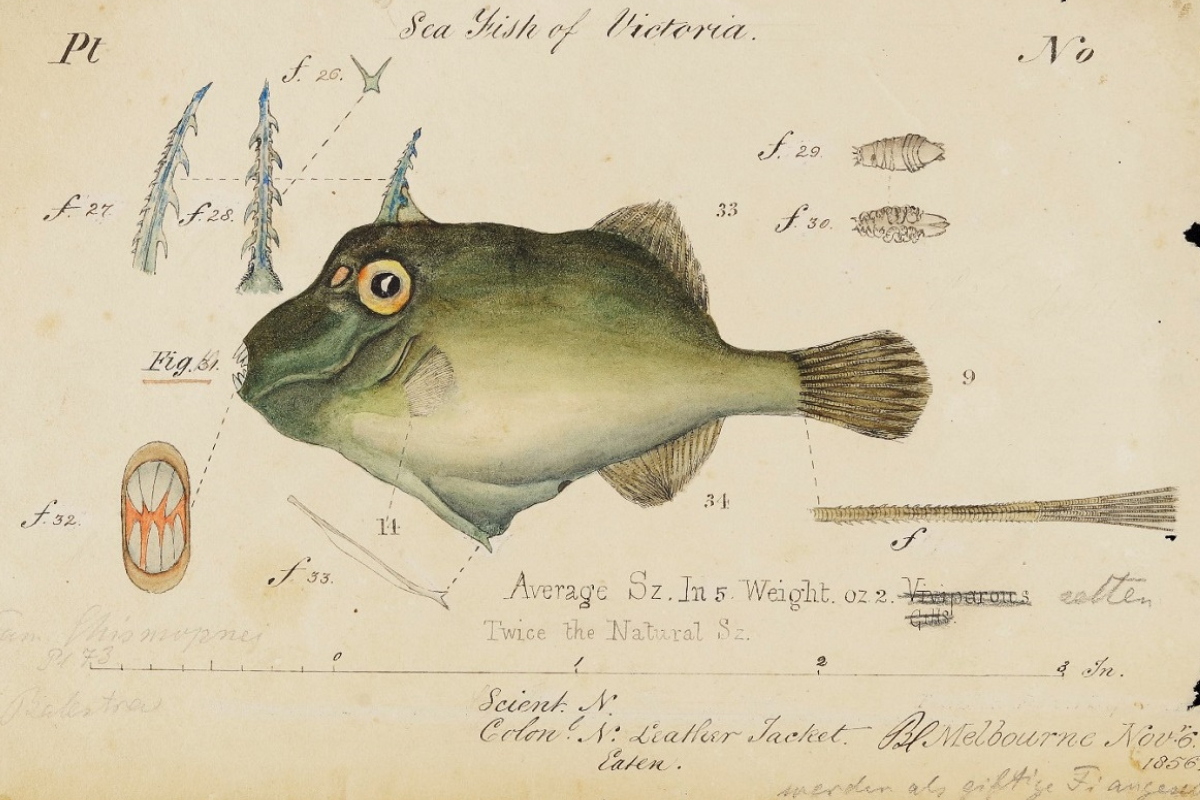William Blandowski (1822-1878) was a mining engineer and zoologist. In 1849, he traveled to Australia for geological studies and the exploration of the local flora and fauna. The archive at the Museum für Naturkunde Berlin holds parts of his image collection and field notes, which have been newly indexed and digitized in the last three years.
Research in Colonized Australia
With the intention of a natural and botanical exploration as well as geographical descriptions of the country, Blandowski traveled to Adelaide, Melbourne and along the Australian East Coast to Sydney and Cape York. His best-known expedition explored the junction of the Murray and Darling Rivers in 1856. He studied and collected a variety of organisms for what was then the National Museum of Victoria in Melbourne and returned from the expedition with some 17,400 specimens.
Blandowski’s scientific work was influenced by a collaboration with the indigenous people of the areas he travelled to. Their diverse contributions to his research results are also reflected in the names he gave to the creatures he described. Blandowski repeatedly expressed his criticism of colonial projects and was thus one of the few researchers of the time who explicitly acknowledged the essential contribution of indigenous helpers. However, he too performed his work in the context of colonial settlement practices.
In 1859, Blandowski returned to Germany where he devoted himself to writing down and teaching the results of his Australian research. In 1862, he also completed the work Australia in 142 photographic illustrations, but was never able to publish it. The fish genera Blandowskius as well as Blandowskiella were named after him, based on his research focus on Australian fish species.
Open image collection in the archive and the data portal
The Blandowski image collection in the historical archive of the museum contains over 300 drawings and prints of fish, birds, mammals, amphibians, reptiles, insects and marine invertebrates. Blandowski himself created many of the drawings; others were produced by Gerard Krefft, Gustav Mützel, Arthur Bartholomew and the printer James Redaway & Sons.
The museum's data portal now publishes a part of the collection of drawings and prints that were digitized in the process of our collection development and that explicitly do not contain indigenous knowledge. The publication of images holding this knowledge is currently under examination with Australian partner institutions and councils.
The Museum für Naturkunde Berlin welcomes an open exchange to confirm, comment on, or clarify information found in the data portal and is eager to collaborate with experts and interested parties worldwide to promote a better understanding of the holdings as a global knowledge resource.
